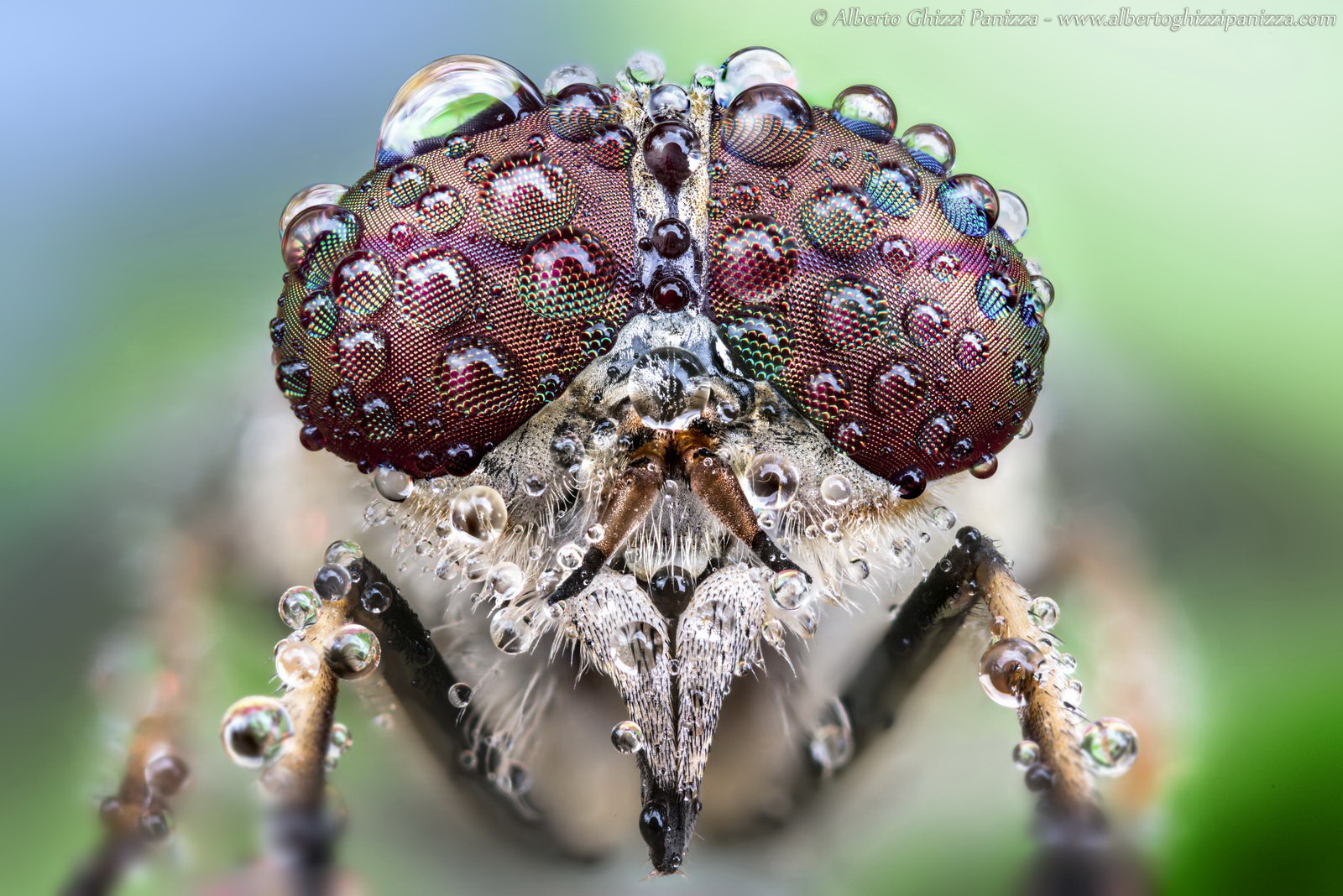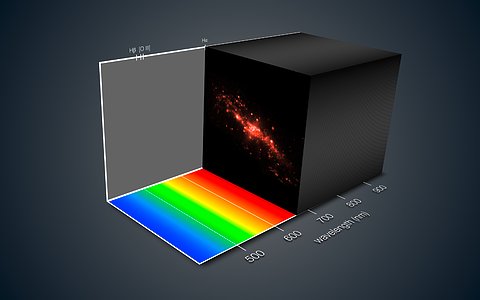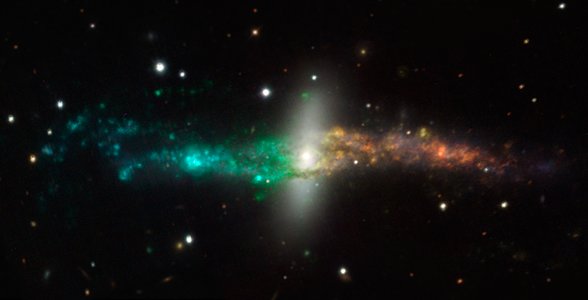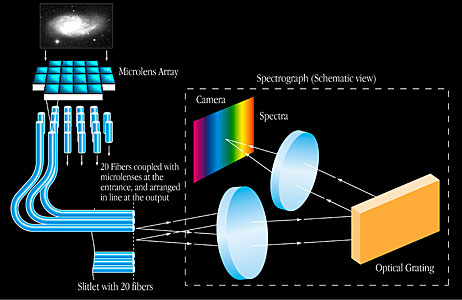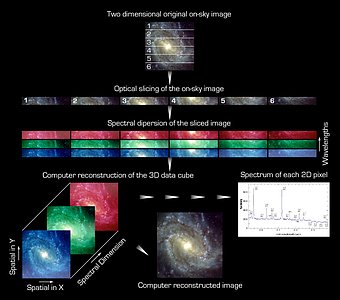Integral Field Units
Hvordan man tager et 3D billede af en hel galakse i eet skud
Tænk på en flue. Har du nogensinde prøvet at fange en? Man skal være hurtig, for ligesom de fleste andre insekter kan fluen opfange bevægelse 360° omkring den. Hemmeligheden ligger i deres sammensatte facetøjne, som er opbygget af et stort antal fotoreceptorer (som kaldes ommatidia). Alle enkeltøjnene arbejder sammen for at danne et meget brede mosaikbillede. Myrer har fra nogle få ommtidiae til tusind, fluer og bier har nogle få tusinde, og sommerfugle og guldsmede har nogle titusinder. Jo flere ommatidiae, des bredere synsfelt og des skarpere syn.
Det samme princip bruger forskere til noget helt andet, og instrumentet kaldes en Integral Field Unit (IFU). Her er synsfeltet opdelt i mange celler, for at kunne danne et sammenhængende billede af det hele. IFUer bruges ofte i fjernobservationer af Jorden fra satellit, i vejrforudsigelser og i overvågningen af naturkatastrofer og klimaforandringer.
Nærbillede af en flue, hvor de sammensatte øjne ses i detalje. Vanddråberne fungerer som linser, som gør facetterne meget tydelige. Hver facet er overfladen af et ommatidium. Med denne type øjne kan små væsener have store synsaggregater (sammenlignet med deres krops samlede overflade), og dermed et stort synsfelt. Kilde: Alberto Ghizzi Panizza
I astronomien bruges IFUer til at studere udbredte objekter, som for eksempel tåger, galakser eller et felt fyldt med stjerner eller mange galakser i en enkelt optagelse. Teknikken kaldes så integral field spectroskopi. Signalet fra hver enkelt celle eller pixel i hele synsfeltet sendes til en spektrograf, som så skaber et spektrum for hver enkelt pixel. Spektrografen opsplitter lyset i dets forskellige farver eller bølgelængder. Alle de resulterende spektrer samles i en datacube (fugur 1), som indeholder hele 2D synsfeltet plus den tredje dimension, som dannes i spektrografen (se figur 2). Astronomern bruger denne informationsmængde fra integral field spektrografer til for eksempel at måle bevægelserne i gasserni i en fjern galakse (se eso1437) eller afstandene til de forskellige galaker indenfor et enkelt billede (se eso1507).
Forskellige typer af IFUer bruger forskellige teknikker til at opdele synsfeltet. De tre mest anvendte i astronomi er:
1. Et mikrolinsegitter (som meget ligner et insektøje)
2. Et bundt lysledere, som kan bruges alene eller i kombinatione med mikrolinsegitteret (se figur 3)
3. En billedopdeler (image slicer - se figur 4)
Ideen til den første IFU kom far G. Courtes i 1982. Den første praktiske anvendelse var instrumentet TIGER, som blev taget i brug i 1987 på 3,6 meter teleskopet Canada-France-Hawaii Telescope (CFHT)) på Mauna Kea, Hawaii. TIGERSs IFU er et mikrolinsegitter.
ESOs første integral field spektrograf var SINFONI, som blev taget i brug ved Very Large Telescope (VLT) i 2004. SINFONI arbejder med en billedopdeler efter samme princip som det nyere instrument MUSE, som har en kæmpe IFU. Multiobjektspektrografen FLAMES har også to IFUer, og andengenerations infrarødspektrografen KMOS har 24 små IFUer, som hver er installeret på en styrbar arm. VIMOS har også en ret vidvinklet IFU, som kombinerer mikrolinser og et bundt lysfibre. Alle disse instrumenter har forskellige funktioner. De er følsomme overfor forskellige bølgelængder, de har forskellige synsvinkler, og de har forskellige spektralopløsningsevne. Det gør dem velegnede til at observere forskellige typer objekter, og give svar på forskellige astronomiske spørgsmål.
Integral field spektrografer bliver mere og mere avancerede, med stadigt større detektorer. DEt kan give os bedre og dybere 3D registreringer af Universet. For at blive i insekternes verden: IFUerne er ved at udvikle sig fra myrer til guldsmede.
Videnskabelige højdepunkter
- FLAMES højdepunkter.
- VIMOS højdepunkter.
- SINFONI højdepunkter.
- MUSE højdepunkter.
- KMOS højdepunkter.
